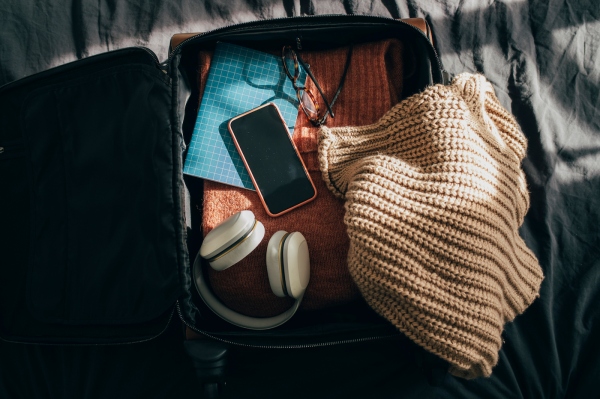The life of a startup founder is not typically relaxing. Long hours are a given and days off are few. Your startup is your baby, and it needs care and feeding 24/7.
So what happens when a pandemic forces office shutdowns and a move to remote work for everyone? Great things, as it turns out.
For several years, my partner and I — normally based in Paris — discussed living a more nomadic life, spending a few months in one city and then moving on to another. When we started talking about it, we both worked in jobs (customer support and software development, respectively) that could in theory be done from anywhere. Then I co-founded my company, and we put our plans for a nomadic life on hold.
We already had a small number of employees working remotely. But when we shut our Paris office and went fully remote in March 2020, some of our staff were in a bit of a panic.
But a funny thing happened on the way to our home offices: Productivity didn’t change at all.
Inbound sales requests skyrocketed — within just a couple of weeks of the pandemic being declared, our leads had increased by 10x. We were signing clients left and right. We even made dozens of new hires while completely remote, doubling the size of the company — we now have people working from 17 countries.
Once things stabilized — albeit at a new, faster pace — my partner broached the topic again. If we’re remote anyway, what’s the difference between being remote from down the street or in another country? She had a point. Either way, we’re not in the office. It’s not as if I would be the only person working remotely — we all were.
We worked together to come up with some criteria. First, any location we chose had to be no more than a time zone or two outside of Paris, to make communication with the office smoother. Second, any apartment we rented had to have reliable, high-speed internet and two separate workspaces or nearby space, like a café or coworking space, since we’d both be working remotely. Third, I would need to travel back to Paris every four to six weeks, primarily to reduce my anxiety about being away.
We started off with a one-month trip to Iceland, where we worked from an Airbnb with a beautiful view of the mountains. We kept the same hours as we did before and did meetings via video conferences, the same way we did in Paris.
The only difference is when we were able to take a break from work, we used our time to explore and have new experiences. I remember speaking to one of our investors from Iceland, and he remarked on the view in my background — he didn’t realize I wasn’t in Paris and didn’t mind at all. He said that as long as the company was growing — and it was — he didn’t care where my desk was located.
The trip went so well that we decided to do this for a year. After a quick reset in Paris, we moved on to Barcelona for two months and then Greece. As I write this, I’m in Paris for a week and then we leave for Amsterdam. Next on our itinerary are trips to Scotland, Sweden and Norway.
We don’t consider ourselves on vacation — both my partner and I are still working fairly intense hours. We make the most of our off time but are primarily focused on work.
Here’s my advice if you decide to do this yourself:
Consider staying in a similar time zone to your usual office to make your travel less disruptive for others. You don’t want everyone to have to reschedule regular calls and video meetings, for instance.
Check and double-check the internet quality of every destination. We have stayed primarily at Airbnbs — I not only asked hosts about internet quality but also had them send me screenshots of speed tests. I also scout local coworking spaces in advance in case there is a problem with the internet, so I can get resettled quickly if needed.
Dress each morning as if you are going to work. This helps you not fall into vacation mode and stay in a work mindset.
Keep the same hours and routine as you did at home. Wake up at the same time, have your tea or coffee at the same time, and head to your desk.
Curate your remote work kit. Initially, I traveled with much more than I actually needed. Now I’m down to a laptop, a foldable laptop stand, a Bluetooth mouse and keyboard, and a noise-canceling headset and mic. Have as few wires as possible. Initially, I had a mini router in case of emergencies, but I’ve learned that using my phone as a hotspot works just as well, and even that I’ve needed sparingly.
Very few people (at least in tech) work 9 to 5 — we are all connected, all the time. Often, we’re working with customers, colleagues and investors in different countries. Asynchronous communications have become the norm. Even before the pandemic, there were Livestorm employees and investors based in other countries whom I’d never met in person.
Over the past year as we’ve almost fully remote, we’ve doubled our headcount and nearly doubled revenue. We also closed a $30 million funding round, completely via email and video conferencing.
Our Paris office has reopened, but in a different format — it’s now organized as more of a co-working space, with room for 30 (our total head count is more than 150). Staff who want to come in can make a reservation, and we have more meeting and hangout space than we used to, since most people who come in are there to collaborate with others.
The weeks I’m in Paris, I go in for meetings most days — but often can still be found working from a Paris apartment, which could be anywhere.


